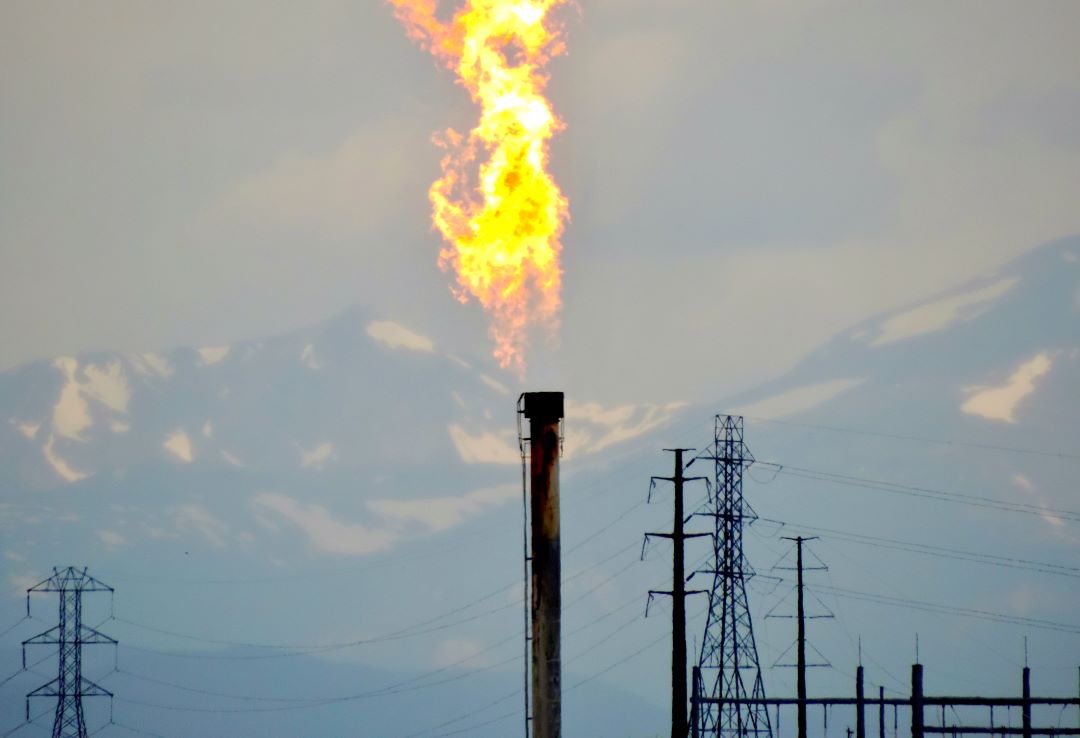Current work in wildlife, rivers, public lands, and climate
Press Releases
Unhealthy ozone pollution underscores need for action to confront oil and gas along Colorado front range
“With ozone pollution already soaring along Colorado’s Front Range, it’s clear the oil and gas industry is still getting a free pass to pollute,” said Jeremy Nichols, WildEarth Guardians’ Climate and Energy Program Director. “It’s clear the health of people and communities is still getting thrown under the bus to accommodate rampant drilling and fracking.”
On April 11, 2023, ozone levels hit federal health limits at monitoring sites in Evergreen in Jefferson County and near Chatfield State Park in Douglas County southwest of Denver. While federal health limits require daily ozone concentrations in the air to be no more than 70 parts per billion over an eight-hour period, concentrations in Evergreen reached 71 parts per billion and at Chatfield reached 70 parts per billion. Click here to view the daily ozone monitoring data from April 11, 2023
These concentrations were the highest recorded so far in 2023 with the ozone in Evergreen representing the first time so far in 2023 that health limits were exceeded along the Colorado Front Range. In spite of the high ozone, the Colorado Department of Public Health and Environment issued no health warnings on or before April 11, 2023.
Ozone, the key ingredient of smog, forms when pollution from smokestacks, tailpipes, and oil and gas extraction operations reacts with sunlight. While lethal at high concentrations, even at very low concentrations it can damage lung and respiratory tract tissue, trigger asthma attacks, and worsen lung disease. While normally a summer time pollution problem in Colorado, high ozone has been increasingly measured in the springtime. The high ozone measured last week correlates with record-high temperatures reported in the Denver Metro region.
The high ozone pollution measured on April 11, 2023 comes as Governor Polis has ordered more action to clamp down on oil and gas industry emissions and the Colorado Legislature is weighing a bill that would limit drilling and fracking permits to reduce ozone and protect clean air. Along Colorado’s Front Range, emissions from oil and gas extraction are one of the leading contributors to the region’s ozone problem. In spite of rules to reduce emissions from oil and gas companies, studies continue to find industry’s pollution is climbing.
“The reality is current air quality rules aren’t designed to actually reduce emissions from oil and gas extraction activities,” said Nichols. “Companies may be using pollution controls, but with industry expanding dramatically, they’re now filling the air with more harmful gases than ever.”
“With the first high ozone day of 2023 now recorded, it’s all too clear the solution isn’t better controls, it’s that the oil and gas industry needs to be reduced and ramped down. The only way we can beat ozone along Colorado’s Front Range is if Governor Polis and the Colorado Legislature get behind solutions that ensure oil and gas extraction is reined in and that finally revoke industry’s free pass to pollute.”

Flaring on the Colorado Front Range. Photo by WildEarth Guardians